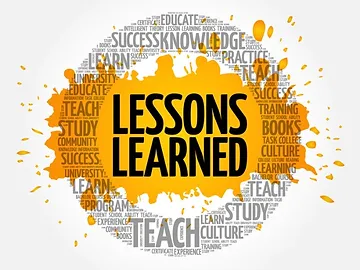SAFETY “LESSONS LEARNED”
I recall spending time with an employee awarded the title of safety coordinator. He asked me how he could be effective in his new role. I was overwhelmed by the question. All sorts of thoughts were running through my head. After some reflection, I came up with several strategies that have served me well over the years. I believe they helped him as well.
Internal Customers
Customer service is paramount in business and safety. Safety leaders must function as internal consultants providing value to their customers. This requires customer interaction, working to ensure that customer needs are met, providing pertinent safety information and resources, and offering routine guidance.
Never Stop Learning
Consider setting aside time each day or week to read a pertinent article, participate in an online seminar, or research a safety related topic. Also consider attending external safety related symposiums, conferences, and applicable third-party training.
Learn How To Build A Safety Culture
Teach
A CEO that I worked for once said, “If you want to be an expert at something, teach it.” When someone is required to instruct others on a subject, they must develop expertise on the subject matter. Embrace opportunities to write safety related articles, routine safety tips, present information on a safety topic at a meeting or seminar or teach internal safety classes. These activities require extensive research, knowledge, and expertise.
Questions are Opportunities
It is merely impossible to answer every safety question that someone may ask. Rather than getting frustrated, look at the question as an opportunity to gain knowledge and expertise. It is common for customers to ask me questions that I do not have a conclusive answer for. Rather than producing something that sounds good, I commonly reply, “Let me do a little research and get back to you. I want to make sure I give you the information you need.” Responses to unanswered questions must be well developed and provided in a timely manner. It’s all in the follow up.
Listen
There is a difference between hearing and listening. Hearing simply happens. A person must consciously choose to listen. Listening requires concentration so that understanding is achieved. Listening to internal customers and working as a team to address safety concerns is an effective way to develop relationships.
Find Two Positives for Every Negative
Safety leaders routinely identify exposure in the workplace. While identifying exposure is not a negative concept, it can be taken that way. Safety assessment reports are filled with inadequacies that often reflect negatively on the facility, the manager, and employees. It is important to balance this perceived negativity by shedding light on positive observations. Try to find two positives for every negative. Formally recognize positive behaviors, improvements made to the facility, and compliance with company requirements.
Unfortunately, there is no playbook for becoming a safety leader. Consider committing to the aforementioned strategies. They have served me well over the years, I hope they do the same for you.
Joe Mlynek is a partner and subject matter expert at Safety Made Simple, LLC. He has over 25 years of experience in safety at the corporate level and as a consultant. He is a Certified Safety Professional (CSP) and Occupational Safety and Health Technician (OHST). Joe can be reached at joe.mlynek@safetymadesimple.com
